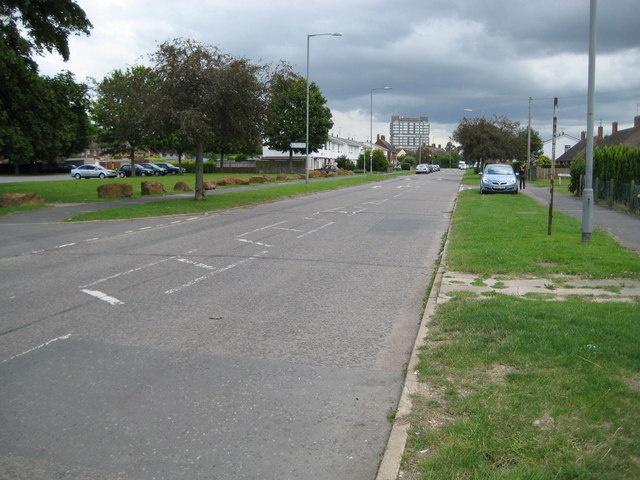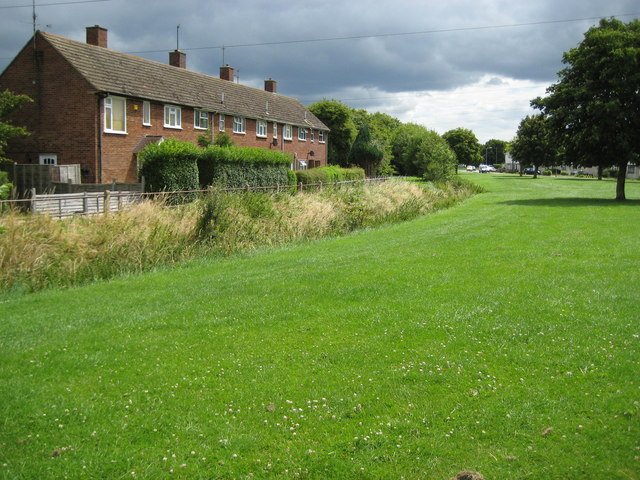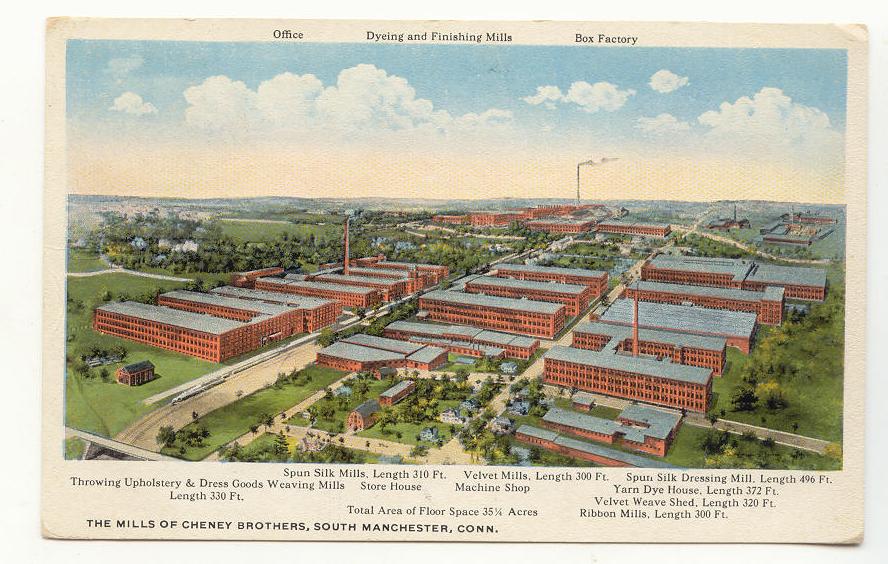|
California, Buckinghamshire
California is a hamlet to the south side of Aylesbury town centre in Buckinghamshire in England, although today it has been completely swallowed up by the urban growth of Aylesbury. Etymology The hamlet is probably named after the U.S. state of California, though its history goes back long before the state was known to British people. The name of the original farm was therefore most likely changed to California at some point before 1839. It is widely believed that the hamlet was named after visiting American servicemen during the Second World War; however, 19th-century maps prove this to be incorrect. History Until the arrival of the Wycombe Railway in Aylesbury in 1863, California was the name of a farm and related buildings that stood in the area. However, with the arrival of the railway, cottages were constructed in the location of the farm to house railway workers and the area became known as the ''Hamlet of California''. Hazell, Watson and Viney In 1867, printing and p ... [...More Info...] [...Related Items...] OR: [Wikipedia] [Google] [Baidu] |
Buckinghamshire Council
Buckinghamshire Council is a unitary local authority in England, the area of which constitutes most of the ceremonial county of Buckinghamshire. It was created in April 2020 from the areas that were previously administered by Buckinghamshire County Council including the districts of South Bucks, Chiltern, Wycombe and Aylesbury Vale; since 1997 the City of Milton Keynes has been a separate unitary authority. History The plan for a single unitary authority was proposed by Martin Tett, leader of the county council, and was backed by Communities Secretary James Brokenshire James Peter Brokenshire (8 January 1968 – 7 October 2021) was a British politician. A member of the Conservative Party, he served in Theresa May's cabinet as Secretary of State for Northern Ireland from 2016 to 2018, and then as Secretary of .... District councils had also proposed a different plan in which Aylesbury Vale becomes a unitary authority and the other three districts becomes another unitary a ... [...More Info...] [...Related Items...] OR: [Wikipedia] [Google] [Baidu] |
Hazell, Watson And Viney
Hazell, Watson and Viney was an English printing and publishing firm with works in Aylesbury that operated from 1839 to c. 1991. History The company started as a printing business established by a certain William Paul in Kirby Street, Hatton Garden in 1839. In 1843 it was sold to George Watson, then working as a jobbing printer and stationer at Tring in Herts. He bought a new ''Hopkinson & Cope'' press, modernised the plant by introducing steam power and considerably expanding the enterprise, initially printing the temperance magazine "Band of Hope Review". His printing contracts soon included the monthly "The British Workman and Friends of the Sons of Toil". To these were added " Eclectic and Congregational Review", "Alexandra Magazine", "Woman's Social and Industrial Advocate" and "Family Mirror". Walter Hazell (1843-1919) joined the firm in 1863 and it became known as ''Watson and Hazell''. Hazell launched the "Illustrated Photographer" and "Amateur Photographer", and also prin ... [...More Info...] [...Related Items...] OR: [Wikipedia] [Google] [Baidu] |
Sir Henry Floyd Grammar School
Sir Henry Floyd Grammar School (SHFGS) is an 11–18 mixed, grammar school and sixth form with academy status in Aylesbury, Buckinghamshire, England. It is named after Sir Henry Floyd, a former Lord Lieutenant of Buckinghamshire. As a selective school, its entry requirements are governed by the exam taken by students entering Year 7. History The school was founded as the Aylesbury Technical College in 1948. The original school was built in Walton Road Aylesbury and remained there until the early 1960s. The School had been a 'selective' school for many years requiring a 'pass' in the Eleven Plus examination to attain entry. When it moved to its current site on Oxford Road in 1963, the name was changed to Aylesbury Technical High School. In 1965, the school was renamed as The Sir Henry Floyd Grammar School, after Sir Henry Floyd, the Lord Lieutenant of Buckinghamshire at the time. Houses The school has a house system of six houses, which are named after estates in the l ... [...More Info...] [...Related Items...] OR: [Wikipedia] [Google] [Baidu] |
Aylesbury College
Aylesbury College is a general further education college in Aylesbury, Buckinghamshire, England. It educates students in a broad range of vocational fields, including Creative Arts, Health and Social Care, Hair and Beauty, Hospitality and Catering, Construction, Business and IT in addition to A Level and GCSE in its Sixth Form Centre. Education Although many learners are aged 16–18, the college offers a range of programmes for employers and employees, including Apprenticeships, Traineeships, and other work-based training. In 2011/12 the college enrolled approximately 1,812 students in full-time courses and 812 in part-time courses.http://www.aylesbury.ac.uk/media/168841/aylesbury_college_ofsted_report_13th_may_2013.pdf In May 2013 Aylesbury College received a rating of 'Good' from Ofsted following a full inspection. Facilities In 2007 the college undertook significant change following a £30 million building project to provide a new modern learning environment. The n ... [...More Info...] [...Related Items...] OR: [Wikipedia] [Google] [Baidu] |
Parsonage
A clergy house is the residence, or former residence, of one or more priests or ministers of religion. Residences of this type can have a variety of names, such as manse, parsonage, rectory or vicarage. Function A clergy house is typically owned and maintained by a church, as a benefit to its clergy. This practice exists in many denominations because of the tendency of clergy to be transferred from one church to another at relatively frequent intervals. Also, in smaller communities, suitable housing is not as available. In addition, such a residence can be supplied in lieu of salary, which may not be able to be provided (especially at smaller congregations). Catholic clergy houses in particular may be lived in by several priests from a parish. Clergy houses frequently serve as the administrative office of the local parish, as well as a residence. They are normally located next to, or at least close to, the church their occupant serves. Partly because of the general conservati ... [...More Info...] [...Related Items...] OR: [Wikipedia] [Google] [Baidu] |
Municipal Borough Of Aylesbury
The town of Aylesbury formed a local government district in Buckinghamshire, England from 1849 to 1974. It was administered as a local board district from 1849 to 1894, as an urban district from 1894 to 1916, and as a municipal borough from 1917 until its abolition in 1974. History The parish of Aylesbury was declared to be a local board district on 5 September 1849, to be governed by a local board of health. After elections, the Aylesbury Local Board of Health held its first meeting on 17 October 1849. Under the Local Government Act 1894, local board districts became urban districts with effect from 31 December 1894. Aylesbury Urban District Council held its first meeting on 3 January 1895 at County Hall in the Market Square in Aylesbury. Henry Wyatt was elected the first chairman of the council. On 1 January 1917 the town was granted municipal borough status under the Municipal Corporations Act 1882. The first mayor was Robert William Locke. Premises In its early years, the ... [...More Info...] [...Related Items...] OR: [Wikipedia] [Google] [Baidu] |
Bishop Of Oxford
The Bishop of Oxford is the diocesan bishop of the Church of England Diocese of Oxford in the Province of Canterbury; his seat is at Christ Church Cathedral, Oxford. The current bishop is Steven Croft, following the confirmation of his election to the See on 6 July 2016.Diocese of Oxford — Legal ceremony brings Bishop Steven a step closer & Diocese of Oxford — Letter from Bishop Steven (Both Retrieved 8 July 2016) The Bishop of Oxford has authority throughout the diocese, but also has primary responsibility for the city and suburbs of Oxford, which form the Archdeaconry of ... [...More Info...] [...Related Items...] OR: [Wikipedia] [Google] [Baidu] |
Southcourt
Southcourt is a housing estate in Aylesbury, Buckinghamshire, England. Building commenced in the early 1920s through to the mid-1930s and only stopped because of the Second World War. It was turned into a post war housing estate during the years of 1946 and 1955. The area is named after the pig farm over which the housing estate was built. History The oldest house in Southcourt is in Cottesloe Road on the junction of Clover Lane. This was the original farmhouse built at the start of the 20th century. The first sod for the rest of the estate was cut in 1922 by The Duke of York: hence one of the first roads of the estate was named York Place in his honour. At the time the housing was publicised as "Homes for Heroes", and the first houses on the estate were reserved solely for veterans of the First World War. Until 1967, there used to be a 'Halt' at what was the pedestrian crossing from Old Stoke Road, Southcourt to Mandeville Road (closed in 2016). The ' Aylesbury South Hal ... [...More Info...] [...Related Items...] OR: [Wikipedia] [Google] [Baidu] |
Tesco
Tesco plc () is a British multinational groceries and general merchandise retailer headquartered in Welwyn Garden City, England. In 2011 it was the third-largest retailer in the world measured by gross revenues and the ninth-largest in the world measured by revenues. It has shops in Ireland, the United Kingdom, the Czech Republic, Hungary and Slovakia. It is the market leader of groceries in the UK (where it has a market share of around 28.4%). Tesco has expanded globally since the early 1990s, with operations in 11 other countries in the world. The company pulled out of the US in 2013, but continues to see growth elsewhere. Since the 1960s, Tesco has diversified into areas such as the retailing of books, clothing, electronics, furniture, toys, petrol, software, financial services, telecoms and internet services. In the 1990s, Tesco re-positioned itself from being a downmarket high-volume low-cost retailer, attempting to attract a range of social groups with its low-cost ... [...More Info...] [...Related Items...] OR: [Wikipedia] [Google] [Baidu] |
Silk Mill
A silk mill is a factory that makes silk for garments using a process called silk throwing. Traditionally, silk mills were concentrated in Japan, England, New Jersey, Pennsylvania, Italy and Switzerland. The silk throwing process Silk is a naturally produced fibre obtained from many species of the silk moth. In 1700 the favoured silk was produced by a moth (Bombyx mori), that spun a cocoon to protect the larvae. The larvae fed on mulberry leaves grown in Italy. Silk fibres from the Bombyx mori silkworm have a triangular cross section with rounded corners, 5–10 μm wide. The silk is a protein, fibroin, that was cemented in place by the use of gum, another protein, sericin. The cocoons were harvested and placed in troughs of hot water to dissolve the gum and allowed the single thread to be wound into a skein. The skeins were placed into bales and taken to the mill for processing. Three sorts of yarn could be produced: ''no-twist'' which was suitable for weft, ''tram'' that had ... [...More Info...] [...Related Items...] OR: [Wikipedia] [Google] [Baidu] |
Cottage
A cottage, during Feudalism in England, England's feudal period, was the holding by a cottager (known as a cotter or ''bordar'') of a small house with enough garden to feed a family and in return for the cottage, the cottager had to provide some form of service to the manorial lord.Daniel D. McGarry, ''Medieval history and civilization'' (1976) p 242 However, in time cottage just became the general term for a small house. In modern usage, a cottage is usually a modest, often cosy dwelling, typically in a rural or semi-rural location and not necessarily in England. The cottage orné, often quite large and grand residences built by the nobility, dates back to a movement of "rustic" stylised cottages of the late 18th and early 19th century during the Romantic movement. In British English the term now denotes a small dwelling of traditional build, although it can also be applied to modern construction designed to resemble traditional houses (" mock cottages"). Cottages may be ... [...More Info...] [...Related Items...] OR: [Wikipedia] [Google] [Baidu] |



.jpg)



